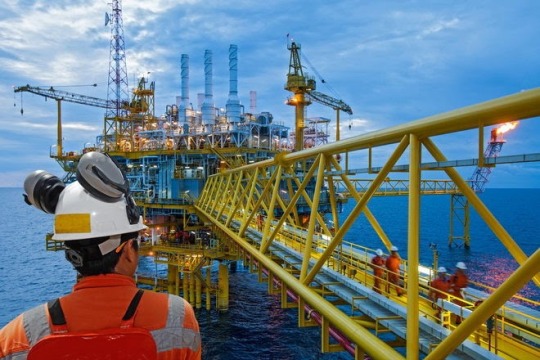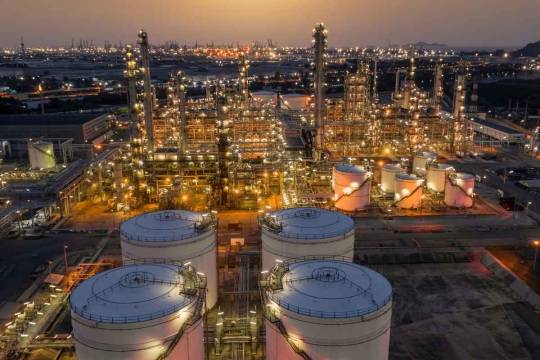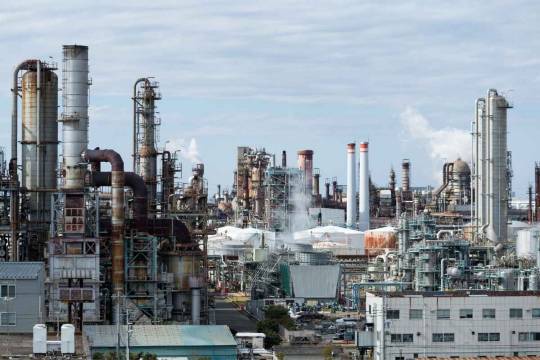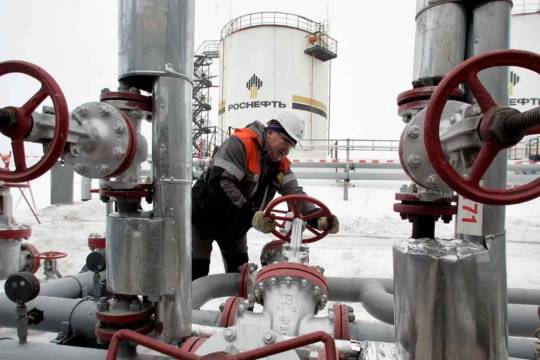#petroleumengineers
Explore tagged Tumblr posts
Text
#petroleumengineering#oilengineering#career#jobs#salary#growth#challenge#environment#sustainability#education#internship#license
2 notes
·
View notes
Text
Safety in Offshore Oil and Gas Drilling

Source: Image by chitsanupong's Images
Category: Chemicals and Materials, Upstream, Exploration & Production (E&P)
Offshore oil and gas drilling plays a critical role in meeting the world’s energy demands. As exploration and extraction activities expand into deeper waters and more challenging environments, ensuring safety in offshore oil and gas drilling has become increasingly vital. The industry is under constant scrutiny due to past incidents and environmental concerns, making it essential to implement robust safety measures. This article explores the importance of safety in offshore oil and gas drilling, highlighting key practices, technologies, and regulations that contribute to risk mitigation.
Understanding the Risks of Offshore Drilling
Offshore drilling involves significant risks that can affect workers, marine ecosystems, and surrounding communities. These risks include equipment failures, human errors, natural disasters, and environmental hazards such as oil spills. The consequences of these incidents can be catastrophic, leading to loss of life, long-term environmental damage, and substantial financial losses for companies involved.
To address these challenges, the industry must prioritize safety in offshore oil and gas drilling through a comprehensive approach that incorporates advanced technologies, rigorous training programs, and strict adherence to regulations.
Key Safety Practices in Offshore Oil and Gas Drilling
https://oilgasenergymagazine.com/wp-content/uploads/2024/12/23.1-Key-Safety-Practices-in-Offshore-Oil-and-Gas-Drilling-Image-by-bashta-from-Getty-Images.jpg
1. Risk Assessment and Management
Effective risk assessment is the cornerstone of safety in offshore oil and gas drilling. Operators must identify potential hazards and evaluate the likelihood and impact of these risks. This involves conducting regular safety audits, using risk assessment tools, and maintaining clear communication among all stakeholders. By prioritizing proactive risk management, companies can develop strategies to mitigate risks before they escalate.
2. Comprehensive Training Programs
Training is critical in ensuring that personnel are well-prepared to handle the unique challenges of offshore drilling. Comprehensive training programs should cover safety protocols, emergency response procedures, and the use of safety equipment. Continuous training ensures that all workers, including new hires, are familiar with the latest safety practices and technologies. Simulation-based training, which mimics real-life scenarios, can be particularly effective in preparing personnel for emergencies.
3. Adoption of Advanced Technologies
Technology plays a vital role in enhancing safety in offshore oil and gas drilling. Advanced drilling techniques, such as remote-operated vehicles (ROVs) and automated drilling systems, can reduce human intervention in high-risk situations. Additionally, real-time monitoring systems enable operators to track equipment performance and detect anomalies before they lead to accidents. These technologies not only improve safety but also increase operational efficiency.
4. Emergency Response Plans
Preparedness for emergencies is crucial in offshore oil and gas drilling operations. Companies must develop and regularly update comprehensive emergency response plans that outline procedures for various scenarios, such as oil spills, equipment failures, and severe weather events. These plans should include designated roles for personnel, communication protocols, and evacuation procedures. Conducting regular drills helps ensure that everyone knows their responsibilities and can respond effectively in a crisis.
5. Environmental Protection Measures
Environmental considerations are a significant aspect of safety in offshore oil and gas drilling. Operators must implement measures to minimize the environmental impact of their activities. This includes conducting environmental impact assessments (EIAs) before drilling, using blowout preventers (BOPs) to control well pressure, and adhering to best practices for waste management. By prioritizing environmental protection, companies not only safeguard marine ecosystems but also protect their reputation and long-term viability.
Regulatory Framework and Compliance
The offshore oil and gas industry is subject to stringent regulations aimed at ensuring safety and environmental protection. Various national and international organizations, such as the International Maritime Organization (IMO) and the Bureau of Safety and Environmental Enforcement (BSEE), establish guidelines that operators must follow.
Compliance with these regulations is crucial for maintaining safety in offshore oil and gas drilling. Companies should regularly review their practices to ensure adherence to evolving regulations and industry standards. Non-compliance can result in hefty fines, legal liabilities, and reputational damage, underscoring the importance of a robust compliance program.
The Role of Culture in Safety

Fostering a safety-oriented culture within organizations is essential for enhancing safety in offshore oil and gas drilling. This culture should promote open communication, accountability, and continuous improvement. Leadership must prioritize safety as a core value and encourage employees to report safety concerns without fear of retaliation. Recognizing and rewarding safe behavior can further reinforce this culture, motivating employees to prioritize safety in their daily tasks.
Conclusion
Safety in offshore oil and gas drilling is a multifaceted challenge that requires a proactive and comprehensive approach. By implementing effective risk management strategies, investing in training and technology, and adhering to regulations, companies can significantly enhance safety and reduce the risk of accidents. A culture of safety, combined with robust emergency response plans and environmental protection measures, is crucial in navigating the complexities of offshore drilling operations.
As the demand for energy continues to rise, the offshore oil and gas industry must remain vigilant in prioritizing safety. By doing so, they not only protect their workers and the environment but also ensure the long-term sustainability of their operations in an increasingly competitive global market.
0 notes
Text
Well Cementing Services Market Future Outlook: Analyzing Size, Share, Growth Patterns
The global well cementing services market is expected to reach USD 11.6 billion by 2030. The market is projected to grow at a CAGR of 4.1% from 2024 to 2030, according to a new report by Grand View Research, Inc. Rising drilling activities to recover unconventional hydrocarbons such as shale and tight gas coupled with rehabilitation activities in existing oil & gas fields is expected to remain a key driving factor for the global market.

Well Cementing Services Market Report Highlights
The primary type dominated the market with a global revenue share of 77.7% in 2023 and is projected to continue its dominance from 2024 to 2030.
The well cementing services market in North America secured 41.1% of the global revenue share in 2023. The development of untapped hydrocarbon reserves was a major driving force.
The Asia Pacific well cementing services market was significantly augmented owing to the strong growth in cement consumption, partially due to the reopening of the Chinese economy.
The global industry is dominated by various integrated players present across the value chain. Key companies operating in the well cementing service market include Schlumberger Ltd., Baker Hughes Inc., Halliburton, Weatherford & Gulf Energy Llc., and Calfrac Well Services Ltd.
For More Details or Sample Copy please visit link @: Well Cementing Services Market Report
A large number of unexplored reserves particularly in Brazil, Russia, and China, coupled with technological advancements in well cementing equipment and services provided by oil service providers is projected to have a positive impact on the market growth in the near future. Stringent environmental regulations coupled with low crude oil prices are expected to hinder market growth over the next eight years. Low crude oil prices are anticipated to support stronger economic growth, but it may hamper growth among energy-producing states.
Primary cementing was the leading service segment and accounted for over 75% of total market revenue in 2015. It is estimated to remain the largest segment over the next eight years owing to rising E&P to exploit unconventional hydrocarbon reserves. Remedial cementing is anticipated to emerge as the fastest-growing well cementing service market over the forecast period owing to increasing rehabilitation of oil & gas wells in both onshore and offshore activities.
List of major companies in the Well Cementing Services Market
Advanced Cementing Services Incorporated
Baker Hughes Company
Calfrac Well Services Ltd.
China Oilfield Services Limited
Gulf Energy SAOC
Halliburton Company
Magnum Cementing Services Ltd.
Sanjel Energy Services
Schlumberger Limited
For Customized reports or Special Pricing please visit @: Well Cementing Services Market Analysis Report
We have segmented the global well cementing services market on the basis of type, well type, deployment and region.
#WellCementing#OilfieldServices#EnergyIndustry#DrillingOperations#WellConstruction#CementingSolutions#PetroleumEngineering#OilAndGas#EnergyInnovation#SubsurfaceTech#WellIntegrity#ReservoirManagement#FieldDevelopment#IndustrialServices#EnergySector
0 notes
Text
Maximizing Drilling Performance with PHPA Based Polymers | Chemtex Speciality Limited

Boost your Drilling efficiency and reduce environmental impact with chemtex's "PHPA" based Polymers.
Chemtex's polymers are versatile, catering to a wide range of drilling operations including deep drilling, foundation piling, diaphragm walls, trenching excavations, and more. They are formulated to mix easily even with minimum shear in fresh water, enhancing their usability across different drilling scenarios.
#sustainabledrilling#efficientdrilling#greendrilling#highperformance#drillingtechnology#smartdrilling#phpa#drillingfluid#drilling polymer#petroleumengineering#chemical manufacturer#chemtex
0 notes
Text

Required Freshers & Experience In ONGC Platform Mumbai High & Offshore Rig . . Marine Oil Exploration SDN BHD 👇 ▪️ 0 - 3 Years ▪️ 💼 300 Openings ▪️ Rs.3.0 - 10.0 Lakh/Yr ▪️ 📍 Mumbai
Apply Now: https://www.placementindia.com/job-detail/offshore-rigger-in-marine-oil-exploration-sdn-bhd-at-mumbai-1203594.htm
#PlacementIndia#JobSearch#Oil#Gas#Petroleum#RiggingArtist#ONGCPlatformMumbai#OffshoreRog#Roustabout#Rigger#ONGCPlatformJackRigs#DrillingOffshoreservices#PetroleumEngineer#MechanicalEngineer#ElectricalEngineer#OffshoreRigger#India
0 notes
Text
#EnergyInvesting#Innovation#Simplicity#Integrity#WealthBuilding#InflationHedge#PetroleumEngineering#Finance#DataScience#SoftwareEngineering#Transparency#Trust
0 notes
Text

Do you dream of unearthing the secrets hidden beneath the earth's surface? As a top reservoir engineer, you'll be the mastermind, unlocking the potential of oil and gas reserves. But what specific skills set these rockstars apart? Whether you're a budding professional or simply curious about this fascinating field, this webstory will equip you with the knowledge to navigate the exciting world of reservoir engineering. Are you ready to join the ranks of these subsurface superheroes? Take the first step and explore the skills that unlock the reservoir!**
Check this link: https://www.indiaeducationportal.com/?post_type=web-story&p=10178
#reservoirengineering #petroleumengineering #engineering #careeradvice #careergoals #successstories #education #knowledge #indiaeducationportal #IEP #educationportal #upgradeeducations #reservoir
#reservoir#reservoir engineering#engineering#career advice#career goals#education#knowledge#indiaeducationportal#educationportal#petroleumengineering#successsecrets#students#graduation#collegestudents#oilandgas#professionaldegree#professionals
0 notes
Text
instagram
Are you an ambitious engineer aiming to obtain admission to a prestigious university abroad? Engineering is a broad profession with several specialties, many of which you may be unfamiliar with but which may be of interest to you.
Here are Top 3 Engineering pathways to can go for- ➡️𝗣𝗲𝘁𝗿𝗼𝗹𝗲𝘂𝗺 𝗘𝗻𝗴𝗶𝗻𝗲𝗲𝗿𝗶𝗻𝗴 ➡️𝗖𝗼𝗺𝗽𝘂𝘁𝗲𝗿 𝗛𝗮𝗿𝗱𝘄𝗮𝗿𝗲 𝗘𝗻𝗴𝗶𝗻𝗲𝗲𝗿𝗶𝗻𝗴 ➡️𝗔𝗲𝗿𝗼𝘀𝗽𝗮𝗰𝗲 𝗘𝗻𝗴𝗶𝗻𝗲𝗲𝗿𝗶𝗻𝗴
📞Please do not hesitate to contact us📞
Via Phone +𝟵𝟭 𝟴𝟬𝟭𝟬-𝟰𝟬𝟵-𝟰𝟬𝟵
#aerospaceengineering#aerospace#engineering#aircraftengineering#mechanicalengineering#aeronauticalengineering#computeraidedengineering#computer#hardware#computerscience#petroleumengineering#petroleum#chemicalengineering#petroleumengineer#petroleumindustry#industrialengineering#petroleumgeology#oilandgasengineer#ED4WO#Instagram
0 notes
Text
Private Oil and Gas Companies: Driving Innovation in the Energy Sector

Source: Image by avigatorphotographer's Images
Category: Conventional Energy
The global energy sector has long been dominated by government-owned entities, especially in countries rich in oil and gas resources. However, private oil and gas companies have steadily gained prominence, playing a crucial role in the exploration, production, and distribution of these critical energy sources. In many parts of the world, including India, these companies are not only contributing to energy security but also driving innovation through the adoption of new technologies, sustainable practices, and efficient management techniques. In this article, we will explore the rise of private oil and gas companies, their impact on the industry, and the future they are helping to shape.
The Evolution of Private Oil and Gas Companies
Historically, the energy sector was tightly controlled by state-owned enterprises (SOEs) due to the strategic importance of oil and gas. Governments considered these resources national assets, closely regulating their extraction and distribution. However, as economies grew and the energy demand surged, many nations recognized the need for efficiency, technological advancements, and additional investment, leading to the gradual privatization of some segments of the oil and gas industry.
In India, for example, government-controlled behemoths like ONGC and Indian Oil Corporation (IOC) were the primary players for decades. But in recent years, private oil and gas companies such as Reliance Industries Limited and Cairn Energy have emerged as key competitors, driving growth and innovation. This shift has not only boosted competition but also improved the overall efficiency of the sector, allowing for better pricing, increased energy availability, and faster adoption of modern techniques.
Role of Private Oil and Gas Companies in Exploration and Production

Exploration and production (E&P) activities are critical to the success of the oil and gas industry. This segment involves locating new oil and gas reserves and extracting these resources in a cost-effective manner. In this area, private oil and gas companies have been instrumental in pushing boundaries, particularly in difficult-to-reach areas such as offshore locations and unconventional reserves like shale gas.
For instance, Reliance Industries, one of India’s largest private sector companies, has made significant strides in offshore drilling, particularly in the Krishna-Godavari Basin. Their ability to take on high-risk projects, backed by substantial private investment, has allowed them to pioneer new methods of extraction, often ahead of their state-owned counterparts. This has been a key factor in India’s quest to reduce its dependence on oil imports.
In addition to Reliance, Cairn India (now Vedanta Ltd) has also made a significant impact in the E&P sector. Its discovery of oil in the Rajasthan Barmer basin was one of the largest onshore oil discoveries in India, demonstrating the importance of private oil and gas companies in securing new reserves and boosting domestic production.
Technology and Innovation: The Private Sector’s Edge
One of the significant advantages of private oil and gas companies is their ability to invest in cutting-edge technologies that improve the efficiency and sustainability of their operations. This includes advanced seismic imaging, enhanced oil recovery (EOR) techniques, and digitalization of oil fields through automation and artificial intelligence.
In the case of shale gas and tight oil, which require complex and costly extraction processes like hydraulic fracturing (fracking), private firms have led the way. In the United States, private companies were at the forefront of the shale revolution, using innovative drilling techniques to unlock vast reserves previously deemed uneconomical. This has had a profound impact on global oil prices, supply chains, and energy geopolitics.
In India, too, the adoption of new technologies by private players is helping to improve the efficiency of oil and gas extraction. Companies like Reliance and Cairn have invested heavily in digital transformation, using data analytics, real-time monitoring systems, and predictive maintenance to reduce downtime and operational costs. These advancements not only make extraction more profitable but also contribute to environmental sustainability by reducing emissions and minimizing energy waste.
Contribution to Energy Security

Energy security remains a critical concern for most countries, especially those heavily reliant on oil imports, such as India. Private oil and gas companies play a pivotal role in enhancing energy security by boosting domestic production and reducing dependence on foreign oil.
For instance, the development of India’s strategic petroleum reserves (SPR) has been supported by private firms. These reserves act as a buffer during times of supply disruptions, ensuring that the country has access to critical fuel supplies in times of crisis. Private players’ participation in this initiative underscores their importance in safeguarding the nation’s energy needs.
Moreover, the global footprint of some private Indian oil companies has also contributed to energy security. By acquiring assets abroad, such as Reliance’s investment in shale gas fields in the United States, these companies diversify the sources of oil and gas, insulating India from global market shocks.
Sustainability and the Future of Private Oil and Gas Companies
As the world moves towards cleaner energy sources, the oil and gas sector is under increasing pressure to adopt sustainable practices. Private oil and gas companies have been quicker to embrace the energy transition compared to their state-owned counterparts. Many are already investing in renewable energy, carbon capture and storage (CCS) technologies, and reducing their carbon footprints through more efficient processes.
For example, global oil giants like BP and Shell have committed to becoming net-zero carbon emitters by 2050. In India, too, private firms are exploring ways to reduce emissions and invest in renewable energy. Reliance Industries has announced its plans to achieve net carbon zero by 2035, underscoring its commitment to sustainability. This move aligns with the broader global trend where private oil and gas companies are diversifying their portfolios to include cleaner, greener energy solutions, thus contributing to a more sustainable future.
Challenges and the Road Ahead
https://oilgasenergymagazine.com/wp-content/uploads/2024/12/21.3-Volatile-oil-prices-regulatory-hurdles-Image-by-Anoop-VS-from-Pexels.jpg
While private oil and gas companies have made significant contributions to the industry, they face several challenges. Volatile oil prices, regulatory hurdles, and increasing environmental concerns present risks to their operations. Additionally, the growing push toward renewable energy sources poses a long-term threat to the traditional oil and gas business model.
To remain competitive, these companies will need to continue innovating, adopting sustainable practices, and diversifying their energy portfolios. Collaboration with governments on policy frameworks that encourage cleaner energy while ensuring the continued importance of oil and gas in the short to medium term will be essential for their survival and growth.
Conclusion
The rise of private oil and gas companies marks a pivotal shift in the global energy landscape. By driving technological innovation, improving efficiency, and contributing to energy security, these companies play a crucial role in shaping the future of the oil and gas industry. As the world transitions towards cleaner energy, private firms are well-positioned to lead the way, ensuring a balance between energy needs and environmental sustainability. The future of energy will likely be a hybrid one, with private oil and gas companies playing a central role in this transformation.
0 notes
Text
Major Equipment in Atmospheric Distillation Unit (ADU)
The Atmospheric Distillation Unit (ADU) is the primary processing unit in most oil refineries.
It separates crude oil into various fractions based on their boiling points. The following are the key pieces of equipment found in an ADU:
1. Crude Oil Preheat Furnace:
Purpose: Heats the crude oil to a temperature close to its boiling point before it enters the distillation column.
Type: Typically, a fired heater that uses fuel gas or oil to generate heat.
2. Atmospheric Distillation Column:
Purpose: Separates the heated crude oil into different fractions based on their boiling points.
Components:
Tray or Packing: Used to provide contact between the vapor and liquid phases.
Reboilers: Heat the bottoms product to generate vapor.
Condenser: Cools the vapor to condense it into liquid.
3. Fractionators:
Purpose: Further refine certain fractions (e.g., naphtha, kerosene) to meet specific product specifications.
4. Strippers:
Purpose: Remove lighter components from heavier fractions to improve product quality.
5. Heat Exchangers:
Purpose: Recover heat from the process to reduce energy consumption.
Types: Shell-and-tube, plate-and-frame, etc.
6. Pumps:
Purpose: Transfer fluids between different equipment.
7. Piping:
Purpose: Connects the various equipment in the unit.
8. Instrumentation and Controls:
Purpose: Monitor and control the process variables (temperature, pressure, flow rate, etc.).
#oilrefining #petroleum #ADU #crudeoil #fractionation #petroleumengineering #energy #fuels #petrochemicals #chemicalengineering #processengineering #Quora #Question #Answer #Discussion #KnowledgeSharing #Learn #Explore #OilRefining #Petroleum #ADU #Distillation #Engineering #ProcessEngineering #ChemicalEngineering #Energy #Fuel #Petrochemicals #Share #Follow #Like #Comment

#atmosphericdistillationunit#ADU#distillationunit#chemicalengineering#petroleumindustry#refiningprocess#industrialengineering#engineering#science#technology#fractionatingcolumn#reboiler#condenser#overheadcondenser#refluxdrum#pumparound#feedtray#strippingsection#enrichingsection#chemicalplant#oilrefinery#petroleumproducts#processcontrol#automation#engineeringstudent#engineeringlife#education#ADUcomponents#ADUprocess#majorpartsofADU
1 note
·
View note
Photo

A gathering of minds, cultivating innovation and fostering growth #ICCCE2024. 🌱💡#EConferences at #Singapore. #chemistry #science #organicchemistry #chemistrylab #laboratory #chemist #chemistrylove #chemistrynotes #biochemistry #chemicalengineering #petroleumengineering...
0 notes
Text

Want to crack the AMIE exam?
Look no further! Our course is tailored to give you the best possible chance to succeed.
With classes by highly experienced faculty, a complete focus on the AMIE syllabus, video lectures with study notes, and discussion of the previous year's questions, our course has everything you need to achieve your goals.
Don't waste your time with unreliable sources, trust our course to guide you to success. Buy now and get one step closer to becoming an Associate Member of the Institution of Engineers.


Download the app
For android - https://play.google.com/store/apps/details?id=co.arya.kqkzg
For iPhone - https://apps.apple.com/in/app/classplus/id1324522260 (ORG CODE:- KQKZG)
Follow @modulation.in for regular updates
#engineeringstudents#engineeringproblems#engineeringdesign#aerospaceengineering#industrialengineering#petroleumengineering#electronicengineering#engineeringmarvel#civilengineeringstudent#miningengineering#biomedicalengineering#engineeringtech#electronicsengineering#engineeringbasics#civilengineeringworld#mechanicalengineering#productionengineering#chemicalengineering#civil#mechanical#electrical
0 notes
Text
Know about the petroleum engineer salary in India. Learn the details about the lowest, average, and highest petroleum engineering salary in India.
0 notes
Photo

Excited to share the latest addition to my #etsy shop: Petroleum Engineer Gifts Petroleum Engineering mug The best Petroleum Engineers swear the most White Ceramic Petroleum Engineer Mug https://etsy.me/2PENSbM #petroleumengineer #petroleumengineering #haliburton #shelloilcompany #bp #chevron #exxonmobil #petroleum #petroleumengineers #petroleum_engineer #petroleum_engineering #texaco https://www.instagram.com/p/CNaKXaOhP35/?igshid=1t57qrocgqf1a
#etsy#petroleumengineer#petroleumengineering#haliburton#shelloilcompany#bp#chevron#exxonmobil#petroleum#petroleumengineers#petroleum_engineer#petroleum_engineering#texaco
0 notes
Photo

NNP Leadership Job: Be part of one of the nation’s elite research centers in the Neonatal Research Network, in providing leadership to two separate faculty units within one of America’s largest pediatric healthcare systems! This role offers a manageable balance between administrative responsibilities and bedside care. #estimates #system #hr #vision #recruitment #solution #onemillion #healthcare #engineers #mechanicalengineers #civilengineers #pharmacists #softwareengineers #networkengineers #physiotherapists #dentists #chemicalengineers #petroleumengineers #geologists #programmers #socialworkers #systemanalyst #salesmanagers #marketingmanagers #businessdevelopmentmanager #designengineers #physicians #developers #dietitians #chiefexecutiveofficer https://www.instagram.com/p/CB9r3C0AOjD/?igshid=8tcsj1ibghg
#estimates#system#hr#vision#recruitment#solution#onemillion#healthcare#engineers#mechanicalengineers#civilengineers#pharmacists#softwareengineers#networkengineers#physiotherapists#dentists#chemicalengineers#petroleumengineers#geologists#programmers#socialworkers#systemanalyst#salesmanagers#marketingmanagers#businessdevelopmentmanager#designengineers#physicians#developers#dietitians#chiefexecutiveofficer
0 notes